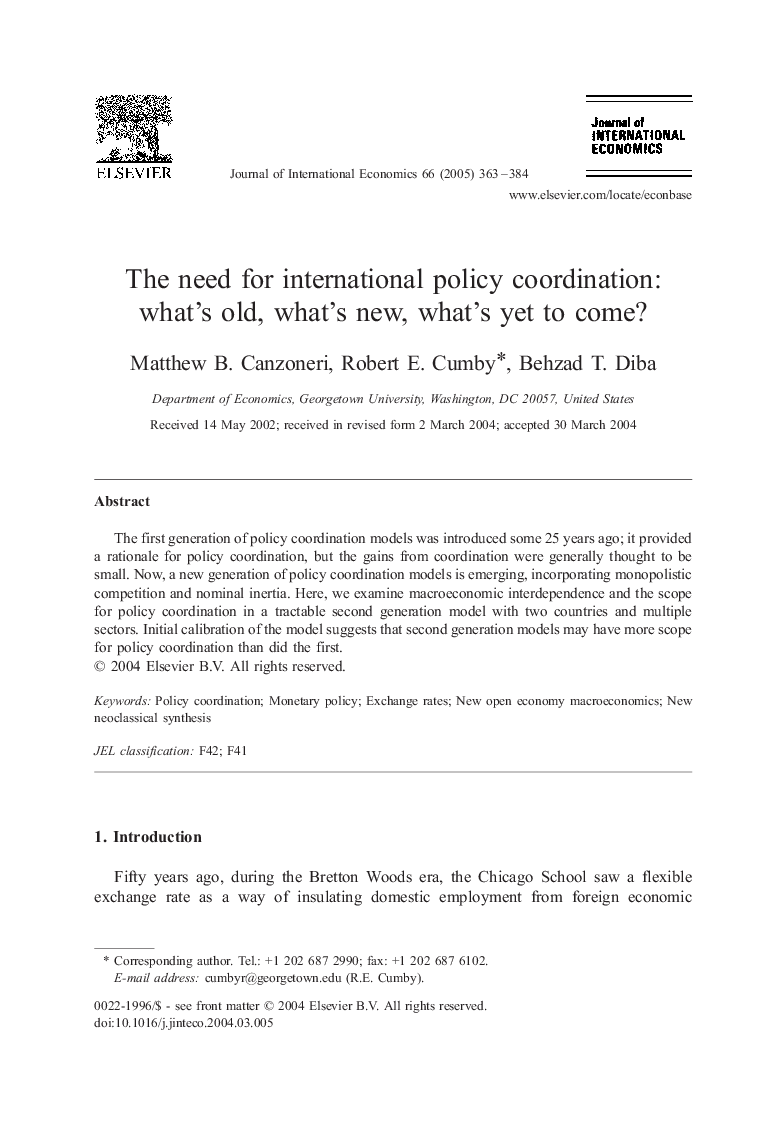| Article ID | Journal | Published Year | Pages | File Type |
|---|---|---|---|---|
| 10477147 | Journal of International Economics | 2005 | 22 Pages |
Abstract
The first generation of policy coordination models was introduced some 25 years ago; it provided a rationale for policy coordination, but the gains from coordination were generally thought to be small. Now, a new generation of policy coordination models is emerging, incorporating monopolistic competition and nominal inertia. Here, we examine macroeconomic interdependence and the scope for policy coordination in a tractable second generation model with two countries and multiple sectors. Initial calibration of the model suggests that second generation models may have more scope for policy coordination than did the first.
Related Topics
Social Sciences and Humanities
Economics, Econometrics and Finance
Economics and Econometrics
Authors
Matthew B. Canzoneri, Robert E. Cumby, Behzad T. Diba,
